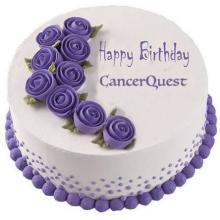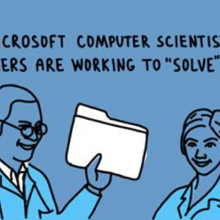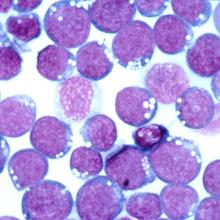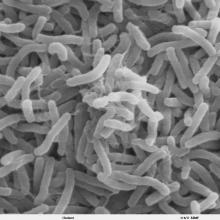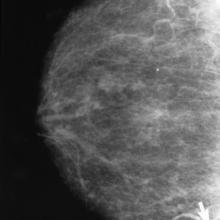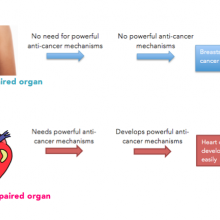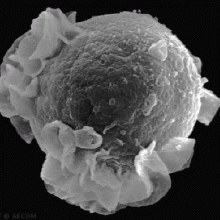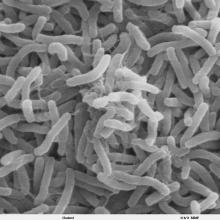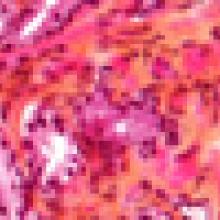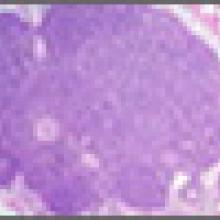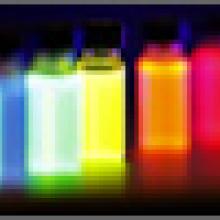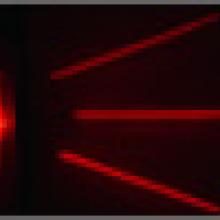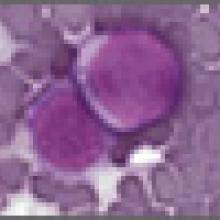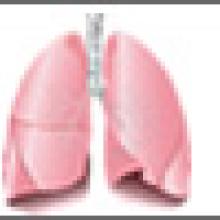Newsroom
October 25th was CancerQuest's 14th birthday!
14 yrs ago, our website was launched - with the mission of empowering patients and saving lives. We are still at it, currently creating two new Chinese versions and expanding our content.
YOU might just be able to help, or even save someone, by… more
Cancer as a computing problem??
Microsoft announced new innitiatives to tackle cancer with computing power. They are focusing on two major efforts. First, by approaching biological systems as being similar to computers. Logical flows of information. They want their computers to 'learn' how… more
Cryotherapy, the use of extreme cold, has been used to treat skin cancer for many years. New results show that cryosurgery may be a good alternative to traditional surgery for some early cases of breast cancer.
The treatment uses liquid nitrogen filled rods to freeze cancer cells, and… more
Epstein-Barr virus, the cause of infectious mononucleosis, or 'mono' - the 'kissing disease', is also a known cause of head/neck cancers, blood cancer and stomach cancer and others. New research has now shown that the virus can cause breast cells to become cancerous as well. Whether the virus… more
Tumor defenses may soon face an emerging weapon in our cancer-fighting arsenal: pulses of suicidal bacterial assassins. These bacteria not only locate tumors, but they grow until they explode (lyse), all at once, releasing a lethal chemical that zaps tumor cells. The “synchronized lysis circuit”… more
In just half a second, veteran radiologists can decide whether a mammogram is abnormal. This suggests that there is some large-scale feature that they have learned, however subconsciously, is a marker of abnormal images.
Termed a “global signal,” this feature was explored in a recent study.… more
All organs are not created equal, especially when it comes to cancer. Breast cancer is so much more common than heart cancer. Why? Scientists have been wrestling with this question for a long time, trying to find factors—cellular and environmental—that make cancer more likely to occur in an… more
Epstein-Barr virus, the cause of infectious mononucleosis, or 'mono', also called the 'kissing disease', is a known cause of head/neck, blood, and stomach cancer as well as others. New research has now shown that the virus can cause breast cells to become cancerous as well. Whether the… more
Tumor defenses may soon face an emerging weapon in our cancer-fighting arsenal: pulses of suicidal bacterial assassins. These bacteria not only locate tumors, but they grow until they explode (lyse), all at once, releasing a lethal chemical that zaps tumor cells. The “synchronized lysis circuit”… more
Cancer cells that spread (metastasize) to other parts of the body from an original location frequently travel through the bloodstream. Because there are so few of these cells in blood, compared to the enormous number of red and white blood cells, the circulating tumor cells (CTC) are very… more
From 1990 to 2005, the cure rate for the most common form of childhood leukemia, acute lymphoblastic leukemia, has increased to 90%. Given that the disease was essentially incurable just fifty years ago, this is a tremendous achievement. The author of the article, Dr. Stephen Hunger,… more
Cruciferous vegetables, including broccoli, cabbage, collards, and kale, are thought to have anti-cancer activity. The chemical responsible for the majority of the cancer-cell fighting effects is called sulforaphane. Sulforaphane is found at particularly high levels in broccoli.
Much… more
Patients treated with chemotherapy sometimes suffer from what is commonly called 'chemo-brain', a group of symptoms related to memory and concentration defects. A study was done with long-term breast cancer survivors who had been treated with a specific chemotherapy regimen (cyclophosphamide… more
Scientists from Florida and Canada have teamed up to develop a new tool for watching how cancer drugs affect their targets. The researchers linked drugs to tiny structures known as quantum dots (Qdots). When the drug-Qdot combination enters the cancer cells, the Qdots give off a reddish… more
About one in three breast cancer survivors suffers from fatigue. A recent study shows that yoga may help with this problem. Thirty-one breast cancer survivors were divided into two groups, one group received health education and the other participated in yoga two times per week.… more
One of the major problems with the majority of current cancer treatments is that they affect both normal and cancer cells, leading to many unpleasant or even dangerous side effects. A Norweigian company has developed a technology that can reduce or eliminate this problem. The… more
The HER2 protein is serves as an receiver/transmitter on the surface of cells. Signals from HER2 cause cells to divide. Some cancers (including breast cancer) can have too much HER2 on their surface. Treatments, like Herceptin®, block some of these cancer cells but not all HER2… more
A chemical naturally formed from Omega-3 fish oil, ¿12-prostaglandin J3, has been shown to cure mice with chronic myelogenous leukemia (CML). The chemical was first identified as a possible drug by a computer analysis. Researchers gave the drug to mice with CML and the results were… more
Some patients treated with chemoatherapy can suffer from a loss of ability to concentrate or remember. This syndrome, informally called 'chemo brain', has been shown to also affect patients treated with radiation. A recent study looked at mental function in women with early stage (stage 0-II… more
Early detection of lung cancer is difficult. A new technology may change that. An international team of researchers has developed sensors that can detect differences in small chemicals released by normal vs lung cancer cells. The cells were grown in the laboratory and the air in… more

